#wikiweird
Text

Cosmic latte
"Cosmic latte" refers to the average color of the universe as determined by a team of astronomers led by Karl Glazebrook and Ivan Baldry. In 2002, they conducted a study to determine the color of the universe by combining light from over 200,000 galaxies.
After analyzing the spectral data from these galaxies, the researchers calculated the average wavelength of light and determined that the color of the universe, when viewed as a whole, is a pale beige or light brown. They humorously named this color "cosmic latte" due to its resemblance to the color of milky coffee.
The color was arrived at by combining the light emitted by stars of different ages and colors in the observed galaxies. It represents a composite color that takes into account the distribution and intensity of light throughout the universe.
The discovery of the cosmic latte color provides an interesting perspective on the overall composition of the universe. It indicates that the combination of stars and galaxies across vast distances creates a uniform hue when viewed from a distance.
While the term "cosmic latte" is not an official scientific term, it has gained popularity in popular science discussions and has become a recognizable way to describe the average color of the universe. It serves as a playful and relatable way to conceptualize the vastness and complexity of the cosmos.
Read more
#cosmic latte#color#color theory#color palette#astrology#astronomy#wikipedia#weird facts#weird history#strange facts#strange history#random fact#weird wikipedia#wikiweird
1K notes
·
View notes
Text
today in: tagging random people to annoy them for no reason
@ihasdrawing @pasta-pp @wikiweird @despaciburritos @staff
13 notes
·
View notes
Text
I live with me Wiki
Newest episode features a BRAND NEW LISTENER SEGMENT, listen to join this WikiWeird fam https://soundcloud.com/wikiship-down/episode-22-i-live-with-me-wiki
#Wikipedia#podcast#wikiship down#twitter#instagram#facebook#podcasting#random#fun facts#knowledge#trivia#pub trivia#humor#friends#comedy#radio#jokes#soundcloud#podcasts#presenters#hosts#learning
2 notes
·
View notes
Text
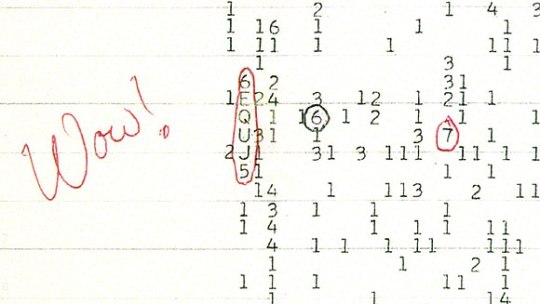
Wow! signal -
In 1977, a radio signal was detected from outer space that lasted for 72 seconds. This signal, known as the "Wow! signal," remains one of the most intriguing and unexplained mysteries in the field of astronomy.
The Wow! signal was detected by astronomer Jerry R. Ehman while he was analyzing data from the Big Ear radio telescope at Ohio State University. The signal was so remarkable that Ehman circled it on the printout and wrote "Wow!" next to it, giving it its name.
What makes the Wow! signal particularly intriguing is its unusual characteristics. It was a narrowband radio signal that appeared to originate from the Sagittarius constellation. The signal's intensity was over 30 times higher than the background noise, indicating a potential artificial origin.
Despite extensive efforts to re-detect the signal and determine its source, it has never been observed again. Scientists have proposed various explanations, including potential extraterrestrial origins, but no definitive conclusions have been reached.
The Wow! signal continues to spark fascination and speculation, representing one of the most enigmatic and unexplained phenomena in the search for extraterrestrial intelligence. It serves as a reminder of the vast mysteries that exist beyond our planet and the ongoing quest to understand the universe.
Read more
#wow signal#wow! signal#outer space#weird facts#wikipedia#weird history#strange facts#wikiweird#weird wikipedia#strange history#random fact
375 notes
·
View notes
Text

Kentucky meat shower
The Kentucky Meat Shower refers to a peculiar incident that took place on March 3, 1876, in Bath County, Kentucky, USA. The event involved chunks of meat seemingly falling from the sky, mystifying the witnesses and leading to various explanations and theories.
According to contemporary reports, a sudden rain of meat occurred in a rural area near the town of Olympia Springs. The meat was described as small, reddish in color, and ranging in size from flakes to larger pieces. It was said to have covered an area of several acres.
Witnesses at the scene reported the meat to have a strange odor and texture. Some individuals even tasted it, leading to different opinions about its origin. Speculations ranged from the notion that it was a heavenly phenomenon to the idea that it was the result of vultures disgorging their contents mid-flight.
Local authorities and scientists were called in to investigate the event. One scientist, Dr. A. Mead Edwards, conducted an examination and concluded that the meat was of muscular origin, resembling either beef or mutton. He suggested that the meat shower might have been caused by a flock of vultures flying overhead and regurgitating their prey.
Despite the investigation, the exact cause of the Kentucky Meat Shower remains uncertain. The incident has become a subject of curiosity and speculation, with numerous theories proposed over the years. Some theories propose that the meat may have been carried by a strong wind from a nearby slaughterhouse, while others suggest it could have been the result of a meteorological event.
The Kentucky Meat Shower continues to captivate the imagination of those interested in unusual and unexplained phenomena. While it remains an intriguing historical event, the specific circumstances surrounding the incident remain a mystery, and it is unlikely that a definitive explanation will ever be determined.
Read more
#kentucky#kentucky meat shower#unsolved mystery#mystery#wikipedia#weird facts#weird history#strange facts#strange history#random fact#weird wikipedia#wikiweird#history
159 notes
·
View notes
Text
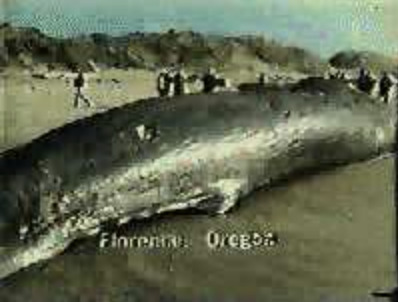

Exploding whale
The "Exploding whale" article recounts a peculiar incident that took place in 1970 in Florence, Oregon. It describes the attempts made by local authorities to dispose of a dead sperm whale that had washed ashore, which ultimately resulted in a rather unexpected and messy outcome.
The article provides details of how authorities decided to use dynamite to remove the carcass of the whale from the beach, assuming that the explosion would disintegrate the remains and seagulls would eat the smaller pieces. However, the explosion was far more powerful than anticipated, sending chunks of blubber flying in all directions, damaging nearby vehicles, and creating an unpleasant odor.
The incident gained significant media attention, and video footage of the exploding whale circulated widely, turning it into a memorable and somewhat bizarre event in local history.
Read more
#exploding whale#whale#marine biology#wikipedia#weird facts#weird history#strange facts#strange history#random fact#weird wikipedia#wikiweird
93 notes
·
View notes
Text
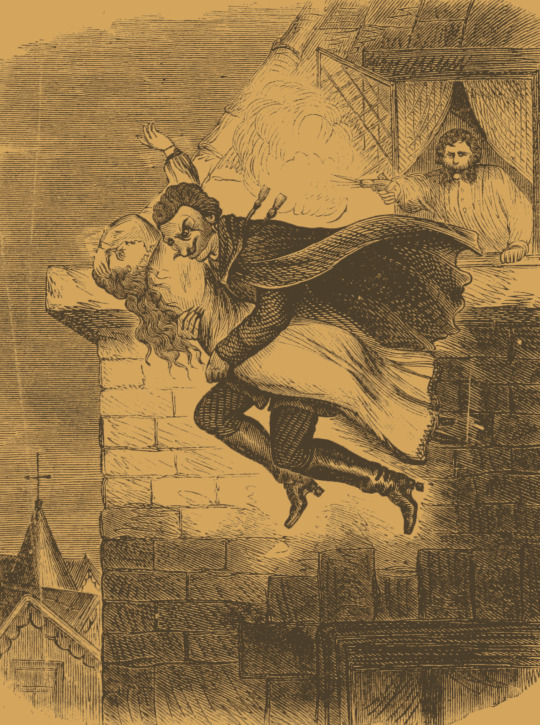
Spring-heeled Jack
Spring-heeled Jack is a legendary figure from Victorian-era England known for his strange and menacing appearances. Reports and accounts of Spring-heeled Jack emerged in the early 19th century and persisted for several decades, sparking fear and fascination among the public.
According to various witness testimonies, Spring-heeled Jack was described as a tall, thin, and agile figure who wore a dark cloak or suit. He was said to possess incredible jumping abilities, leaping great distances or scaling buildings with ease. Reports also mentioned that he had glowing red eyes and could breathe out blue and white flames.
Spring-heeled Jack was notorious for his alleged attacks on individuals, especially women. He was said to ambush victims at night, jumping out from dark corners or rooftops and frightening them with his peculiar appearance and behavior. Some reports claimed that he assaulted his victims by clawing at their faces or clothing before bounding away into the darkness.
The legend of Spring-heeled Jack spread rapidly through newspapers and word of mouth, causing widespread panic and sensationalism. The mysterious nature of the figure led to numerous rumors and speculations about his origins, motives, and even supernatural abilities.
Although many believed Spring-heeled Jack to be a real entity, some accounts were likely exaggerated or fabricated. Over time, the legend became intertwined with folklore and urban myth, and various theories emerged suggesting possible explanations for the phenomenon, ranging from a mischievous prankster to a demonic entity.
The exact identity and true nature of Spring-heeled Jack remain unknown to this day. The legend has left a lasting impact on popular culture, inspiring numerous literary and theatrical adaptations and becoming a symbol of Victorian-era urban folklore and terror.
Read more
#spring heeled jack#folklore#wikipedia#weird facts#weird history#strange facts#strange history#random fact#weird wikipedia#wikiweird#history
88 notes
·
View notes
Text

Bucket of Blood Street is located off U.S. Route 66 in the Old Downtown district of Holbrook, Arizona. Bucket of Blood Street is one block south of the historical Santa Fe Railroad station on Navajo Road that was built in 1882. Holbrook was founded in the 1880s as a railroad stop. At the time, the desert town was mainly populated by ranchers, outlaws, cowboys and cattle rustlers, and was known for its gun fights. Holbrook had a reputation as a "town too tough for women and churches".
Terrell's Cottage Saloon had existed on the street for years before coming to be known as Bucket of Blood Saloon, after a violent fight took place resulting in the death of two men. The saloon was popular with cowboys and ruffians; fistfights and gunfights often broke out there. The year 1886 was a particularly violent one and the town lost about ten percent of its population. A fight broke out at the saloon during a card game between rival cattle rustlers, including wranglers from the Hashknife Outfit of the Aztec Land and Cattle Company. The result of the fight was described as though a bucket of blood had been spilled on the floor.
A newspaper account describes another event on January 19, 1896, when the proprietor of the saloon shot and killed two men playing cards: "Suddenly a dispute arose and angry words passed between them." The manager of the saloon, Harry Donnelly, used a revolver to force another man, George C. Hiatt, a barber, into the street and shot him "through the heart" in front of the town drug store. Donnelly was arrested by Deputy Sheriff Hofford who was acting as the county sheriff, as Commodore Perry Owens was out of town at the time. The newspaper report claims that when the widow Hiatt heard the news she fell "lifeless to the floor". The saloon was owned at the time by F. J. Wattron, however Donnelly managed it.
Albert F. Potter's memoir, written around 1888, describes the events leading to the name Bucket of Blood somewhat differently. He wrote of participating in a "roundup on the Little Colorado River range … 12 miles east of Holbrook." At sunrise two horsemen were seen riding towards his party from the direction of Holbrook. One man shouted, "Here we come! All shot to pieces." The head of the other man was wrapped in bloody bandages covering a serious wound. Potter went on to write: "We recognized them as Joe Crawford, a cowboy who had worked for the Aztec Land and Cattle Company known as the Hashknife Outfit, and George Bell, a gambler. Crawford was so weak [from his wounds] that he had to be lifted from the horse he was riding. We laid him on the horse wrangler's bed and with a handful of flour from the cook's bread pan I plastered the wound on his head and stopped the bleeding. Examination showed that a bullet had also passed through the cuff of his shirt and coat sleeve, and just grazed the side of his body. Scars of other old wounds showed that this was not Crawford's first fight."
Potter then describes Bell's involvement in an incident during a card game with a man named Ramon Lopez, during which Lopez struck Crawford in the head with his six-shooter gun. Crawford retaliated by drawing his gun and killing Lopez. Shooting then broke out in the saloon, and Crawford killed another man, after which "Crawford and Bell then made their getaway". Potter went on to write that he believed Joe Crawford "was in fact Grat Dalton, a member of the notorious Dalton Gang of outlaws who was later killed during an attempted bank robbery at Coffeyville, Kansas". Potter concluded that this was the backstory to the naming of Bucket of Blood Saloon.
Read more
#wikipedia#weird facts#weird history#strange facts#strange history#random fact#weird wikipedia#wikiweird#history
43 notes
·
View notes
Text
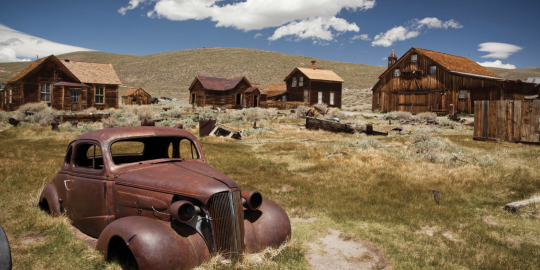
Bodie, California
Bodi is a ghost town in the Bodie Hills east of the Sierra Nevada mountain range in Mono County, California, United States. It is about 75 miles (121 km) southeast of Lake Tahoe, and 12 mi (19 km) east-southeast of Bridgeport, at an elevation of 8,379 feet (2554 m). Bodie became a boom town in 1876 (147 years ago) after the discovery of a profitable vein of gold; by 1879 it had established 2,000 structures with a population of roughly 8,000 people. The town went into decline in the subsequent decades and came to be described as a ghost town by 1915 (108 years ago). The U.S. Department of the Interior recognizes the designated Bodie Historic District as a National Historic Landmark. Also registered as a California Historical Landmark, the ghost town officially was established as Bodie State Historic Park in 1962. It receives about 200,000 visitors yearly. Bodie State Historic Park is partly supported by the Bodie Foundation.
Read more
#bodie#ghost town#abandoned#california#wikipedia#weird facts#weird history#strange facts#strange history#random fact#weird wikipedia#wikiweird#history
25 notes
·
View notes
Text

Homicidal sleepwalking
The "Homicidal sleepwalking" article explores a rare and unusual phenomenon in which individuals commit acts of violence, including murder, while in a state of sleepwalking. The article delves into documented cases of homicidal sleepwalking throughout history and examines the legal and medical implications of such incidents.
It discusses notable cases where individuals have been accused of and even convicted of committing violent acts while sleepwalking. The article delves into the challenges faced by the legal system in determining culpability and establishing the intent of individuals who commit crimes during sleepwalking episodes.
The article also explores the medical understanding of sleepwalking and its various forms, including homicidal sleepwalking. It delves into possible causes, triggers, and risk factors associated with this particular type of sleep disorder.
Please note that while homicidal sleepwalking is a real phenomenon, it is extremely rare. The article provides insights into the documented cases and scientific research surrounding this unusual sleep disorder, shedding light on the complexities of the human mind and the mysteries of sleep behavior disorders.
Read more
#sleepwalking#macbeth#true crime#wikipedia#weird facts#weird history#strange facts#strange history#random fact#weird wikipedia#wikiweird#psychology
30 notes
·
View notes
Text
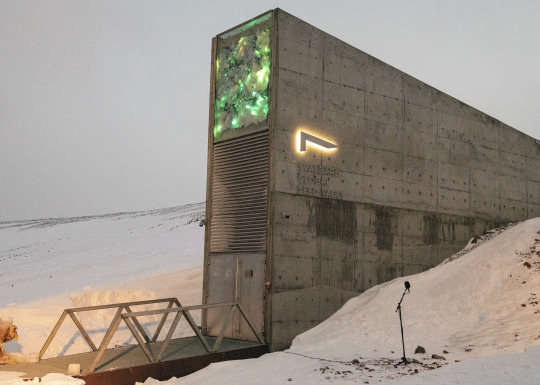
Svalbard Global Seed Vault
The Svalbard Global Seed Vault is a secure seed bank located on the Norwegian island of Spitsbergen, near Longyearbyen. It was established in 2008 as a global backup facility to preserve and protect the world's crop diversity in case of regional or global catastrophes.
Often referred to as the "Doomsday Vault," the seed vault is built into a mountainside and designed to withstand natural and human-made disasters, including earthquakes and nuclear war. It is situated in the permafrost, providing natural cooling and preserving the seeds at a constant low temperature.
The purpose of the seed vault is to safeguard the world's agricultural heritage and ensure the availability of diverse plant genetic resources for future generations. The vault acts as a repository, storing duplicate seed samples from gene banks around the world. These samples represent a wide range of important food crops and plant species.
The seed vault currently holds over one million different seed samples, with the capacity to store up to 4.5 million samples. It serves as a long-term insurance policy for global food security, as it allows for the reestablishment of crops in the event of a major regional or global catastrophe.
The Svalbard Global Seed Vault is an important international initiative, symbolizing the collective efforts to safeguard the world's agricultural heritage and ensure the resilience of food systems.
Read more
#wikipedia#weird facts#weird history#strange facts#strange history#random fact#weird wikipedia#wikiweird#Svalbard Global Seed Vault#doomsday#bunker
41 notes
·
View notes
Text

The Great Emu War -
In the early 1900s, there was a peculiar phenomenon known as "The Great Emu War" that took place in Western Australia. It was an unusual conflict between Australian farmers and a large population of emus, flightless birds native to the country.
In 1932, following World War I, many ex-soldiers in Australia were struggling to make a living. The Australian government decided to offer them land for farming in Western Australia as part of a settlement scheme. However, the farmers soon encountered a problem: an overabundance of emus that were wreaking havoc on their crops.
The emus, in search of food and water, were damaging fences, destroying crops, and causing significant economic losses for the struggling farmers. In response, the government decided to deploy military personnel armed with machine guns to combat the emu population.
The "Great Emu War" commenced on November 2, 1932, with soldiers attempting to cull the emus. However, the emus proved to be formidable opponents. They were fast, agile, and evasive, making it difficult for the soldiers to effectively eliminate them. Despite several attempts, the emus managed to evade the gunfire and continued to cause damage to the farmers' crops.
After multiple unsuccessful military operations, the government eventually abandoned the direct use of armed forces in favor of offering a bounty system to incentivize farmers to cull the emus themselves. This approach proved to be more effective in controlling the emu population.
While the "Great Emu War" was not a conventional war by any means, it stands as a strange and somewhat comical historical event, showcasing the unique challenges faced by Australian farmers and the unexpected resilience of the emus in the face of armed opposition.
Read more
#emu war#emu#wikiweird#weird wikipedia#wikipedia#weird facts#weird history#strange facts#strange history#random fact
31 notes
·
View notes
Text
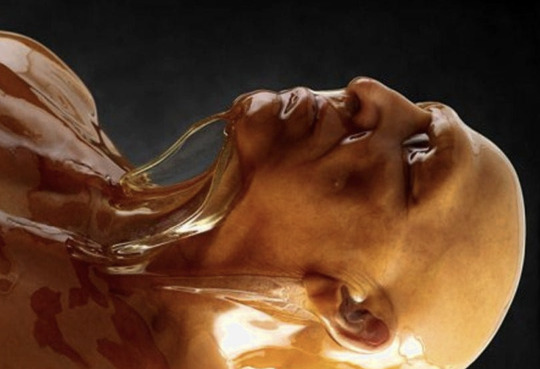
Mellified Man
The "Mellified Man" article describes a unique and bizarre practice that reportedly occurred in ancient China and was documented by the Arabic physician and writer, Ibn al-Nafis. According to the account, elderly men in certain remote communities would volunteer to undergo a special process after their death to transform themselves into a medicinal substance known as "mellified man."
The process involved the individual consuming only honey until death. After their passing, their body would be sealed in a honey-filled coffin for a period of approximately 100 years. The resulting honey, said to have healing properties, would be used as medicine or as an ingredient in medical treatments.
The article discusses the historical context and cultural beliefs surrounding the mellified man practice, which was considered a self-sacrificial act for the betterment of society. It highlights the rarity of documented cases and notes that the authenticity and extent of this practice remain a subject of debate among scholars.
Please note that the concept of the mellified man is considered unusual and falls outside the realm of conventional medical practices. It represents a unique cultural belief and historical phenomenon that may be viewed as strange or unconventional from a contemporary perspective.
Read more
#Mellified Man#wikipedia#weird facts#weird history#strange facts#strange history#random fact#weird wikipedia#wikiweird#history#medical#medical history
42 notes
·
View notes
Text
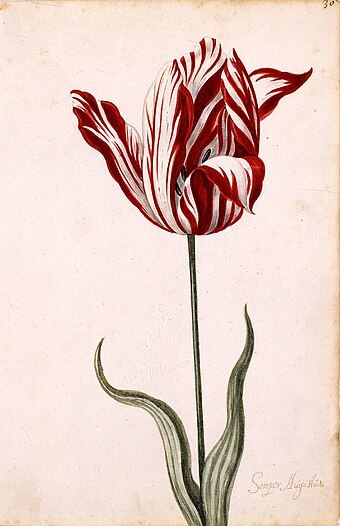
Tulip Mania -
During the 17th century, the Dutch Republic experienced a period known as "Tulip Mania." It was a speculative frenzy in which tulip bulbs became incredibly expensive, reaching extraordinarily high prices. At the peak of the craze in 1637, some rare tulip bulbs were being sold for the equivalent of a luxurious house in Amsterdam. People from all walks of life, including the wealthy, middle class, and even the poor, were caught up in the tulip trade, hoping to profit from the booming market.
The speculation eventually led to a dramatic collapse of the tulip market, resulting in a financial crisis. The bubble burst, causing tulip bulb prices to plummet. Many investors and speculators lost significant fortunes, and the event became one of the most famous examples of an economic bubble in history.
What makes this historical fact strange is the sheer magnitude of the craze and the extraordinary prices that people were willing to pay for a single tulip bulb. It showcases how irrational behavior and speculation can lead to extreme market fluctuations and serves as a reminder of the unpredictable nature of financial markets throughout history.
Read more
#tulips#tulip#tulip mania#wikipedia#weird facts#weird history#strange facts#strange history#random fact#wikiweird#weird wikipedia
34 notes
·
View notes
Text

Simo Häyhä
During World War II, a Finnish soldier named Simo Häyhä achieved an astonishing feat as a sniper. He is often referred to as the "White Death." Häyhä fought in the Winter War between Finland and the Soviet Union in 1939-1940.
Using a Finnish variant of the Soviet Mosin-Nagant rifle, Häyhä became one of the deadliest snipers in history. He operated in freezing temperatures, often hiding in the snow for extended periods. Häyhä amassed an incredible kill count of at least 505 confirmed kills, all within a span of about 100 days. This number is even more remarkable considering that Finland's population at the time was around 3.7 million.
What makes Häyhä's achievement even more astonishing is that he accomplished it without using a telescopic sight. Instead, he relied on iron sights, which provided less magnification and made his shots even more challenging. Additionally, he camouflaged himself well, using snow and vegetation to blend into his surroundings and make it difficult for enemies to spot him.
Häyhä's skill and stealth made him a feared adversary, and the Soviets actively tried to eliminate him by counter-snipers and artillery strikes. However, he survived the war despite being shot in the face at one point. Häyhä ultimately retired as a highly decorated soldier and lived a long life until his death in 2002.
Simo Häyhä's remarkable achievements as a sniper during World War II continue to capture the imagination and stand as a testament to his extraordinary skill, resilience, and the harsh realities of war.
Read more
#strange history#random fact#weird wikipedia#wikiweird#wikipedia#weird facts#weird history#strange facts#history#ww2#WWII#Simo Häyhä
27 notes
·
View notes
Text
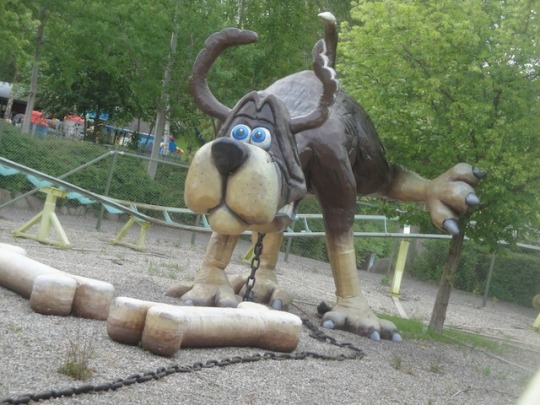
Hundeprutterutchebane -
Hundeprutterutchebane (Danish for "Dog-Fart Roller Coaster") is a steel family roller coaster at BonBon-Land in southern Zealand, Denmark, approximately 100 kilometres (60 miles) from Copenhagen. The rollercoaster is well known for its name and its unique dog-flatulence-related theme. It is a good example of flatulence humor.
Hundeprutterutchebane was the first coaster to open at BonBon-Land in 1993. BonBon-Land was opened in 1992 by a candy maker that manufactured disgusting-sounding candy flavors. Hundeprutter ("Dog Farts") was one of the most popular flavors and consequently became the theme for the first coaster at the park. Built by Zierer, the coaster layout is a relatively simple family coaster, and it is the park's smallest roller coaster.The coaster trains are designed in the shape of a dog named "Henry Dog Fart", and the dog theme is pervasive throughout the coaster's course. Riders go past a statue of a defecating Henry the Dog, through a kennel, and past bones and piles of dog feces. There are also speakers throughout the ride which make farting sounds.
Read more
#wikiweird#weird wikipedia#wikipedia#strange facts#weird facts#rollercoaster#roller coaster#rides#amusement rides#amusement park
24 notes
·
View notes